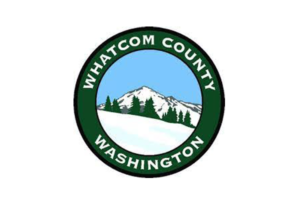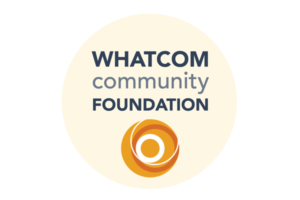December…while it is, first and foremost, a time for us to be with our friends and family, be thankful, take out our mittens and hats, and celebrate the season – it is also the time for reflection and planning.
This may sound boring to some people, but we tend to geek out over this stuff – since we are a team of business advisors and planners!
Are you also in planning mode? If so, are you considering any major new initiatives or strategies in 2017? Perhaps you are a food hub thinking of diversifying your product base to include proteins or grains. Maybe you are considering offering processing services for your growers or buyers. Are you a packaged food business exploring new product lines? Or maybe you are thinking of investing in new marketing and branding strategies for the first time.
Identifying potential new innovations for next year is exciting, but turning them into reality can be daunting. You want to assess how successful they might be, what impact they will have on your team and operations, how much money you need to get them going, what kind of risk you might be facing…and so much more.
Here, we put forth three different approaches you might consider as you are figuring out how to move forward with one or more new initiatives you are exploring.
“Just Do It”: Minimum Viable Product, Test, Assess and Repeat
This method is great for strategies that either require very little investment to go-to-market or are “unstudiable”.
For some strategies or ideas, the best approach to studying and determining if it has merit is to just go out and do it! For example, if you have an excellent new food product and live in a state with progressive Cottage Laws, your best bet may be to create a small number of products in your kitchen and sell them direct to consumers at farmers markets, fairs or through a simple ecommerce website. If you are a food hub interested in diversifying your product set to include a new item (that does not require new facility certifications), you may simply find a supplier and add it to your weekly price lists to see if it moves.
In these scenarios, think about your “Minimum Viable Product” for your strategy, or the lowest cost or roughest version of your offering that you can go to market with and still (1) accurately gauge demand and willingness to pay and (2) ensure you don’t frustrate or alienate your customers with a poor experience. So, in the above example of a food hub stocking a new category of items to test the diversification strategy, it is critical that the hub selects a supplier of exceptional quality (because the quality and safety of product is so critical to the hub’s reputation). However, the hub may decide only to market the new items to one or two buyers, and to offer it on a limited basis, to keep the test as low investment as possible.
It is critical to establish a plan up front on how you’ll test the MVP go-to-market strategy, and indicators that will lead you to decide to either pull the plug on your idea, or move forward with increased levels of investment.
What do we mean by unstudiable? It is very infrequent that something is truly unstudiable but there are rare instances. Perhaps your idea is so out there that it would be nearly impossible to get accurate input from potential customers as to whether or not they want and would be willing to pay for it. Or perhaps you have evidence to suggest that your potential constituents cannot or will not accurately express interest in a new idea. Very occasionally, we see that a region’s food landscape has been “over-studied” with little forward action on these studies, and local food stakeholders sour at the thought of any idea that is in study mode.
“Do It Yourself” Feasibility Study: Your Own Research and Analysis, On a Smallish Budget
This method is great for strategies that are relatively clear in your mind, but that do require investment to move forward or where the cost of failure (even with a minimum viable product) is medium or high.
For example, perhaps you are a food hub considering starting a processing line to sell fresh cut produce. You either know that demand for these products is high, or may be able to test demand through the Minimum Viable Product method (by adding these items to your price list and initially outsourcing processing of product).
However, in-house processing equipment is a major investment. In most cases, a positive ROI requires that equipment can be utilized at high levels for as much of the year as possible. Because of this, assessing a myriad of factors related to supply is critical. How many growers would be interested in working with the hub’s processing line? How much and what type of crops do they have? What price would they need for their products? Would they be willing to enter into preseason contracts? These are all critical questions to understand before major investments are made.
But while researching and understanding these data points is critical, this does not have to be a major feasibility study led by an outside group. New Venture Advisors just released a Do It Yourself Feasibility Study Toolkit that enables and empowers existing businesses and local planning teams to conduct robust studies on their own at a fraction of the cost of a full-fledged effort.
You can read more about the DIY Feasibility Study Toolkit here.
Outsourced Feasibility Study: An Unbiased Study, On a Larger Budget
Finally, the third approach of testing a new strategy is to have an outside group like New Venture Advisors structure and lead a feasibility study for your team. This third option can be best in a few different scenarios.
First, when you actually don’t have a clear sense of the direction you want to take. Perhaps you run a commercial kitchen and have some sense that you need to expand and diversify your business model but have no idea why or how. Perhaps you have a food processing company and want to evolve into a mission-driven organization that more directly and powerfully supports economic development and job creation. Or perhaps you are a food hub that has seen stagnation in your business but do not know how to build and grow.
These are unique scenarios in which a structured and guided / supported research process, like the one offered in the Do It Yourself Approach, will be difficult to apply. An outside group can spend one or more weeks with you to understand your vision(s), the challenges you are facing and the options at your disposal – and use this input to structure a highly effective study that will both clarify the right strategy for you to pursue and evaluate its potential financials and impact.
This comparison chart may help you decide which approach is best for your team and project.
One More Thing
Among our first and most-read blog posts is The One-page Annual Strategic Plan with a framework you may find useful this time of year. Here it is again for those who missed it.
Happy planning!



